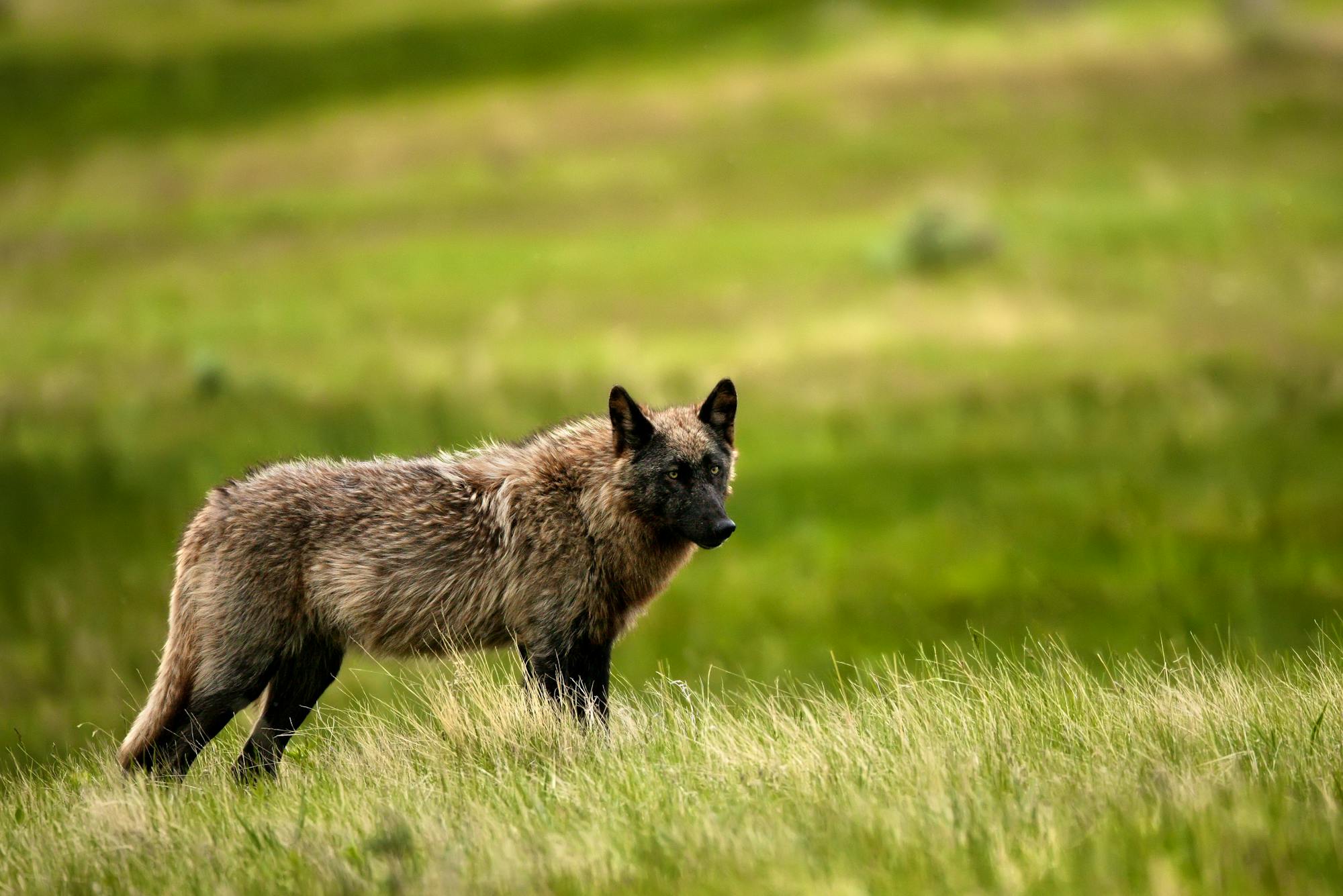Since 1916, the National Park Service has supervised wild places for humans to safely interact with wildlife. Nearly 5,400 species live across the 52 million acres of protected parks around the country, and humans flock to these areas in hopes of awe-spiring sightings of wildlife. Today, we celebrate the anniversary of U.S. National Park System and all it has to offer.
Yellowstone National Park, WY, MT, ID
The establishment of Yellowstone National Park in 1872 was the first time land was federally protected for its ecological and social value. More than 67 different mammal species including gray wolves, grizzly bears and wolverines draw thousands of visitors to the area each year.
As America’s first national park, Yellowstone is home to iconic species like the bald eagle and gray wolf that are protected under the Endangered Species Act (ESA). More than 25 years ago, gray wolves were returned to the wild and into Yellowstone National Park. With their return, what is known as the “Yellowstone effect,” the reintroduction of gray wolves altered grazing previously left unchecked by predation. Wolves helped to bring back rolling valleys and the healthy willows and aspens along the streambeds.
Visitors can enjoy this balanced ecosystem and, if they’re lucky, catch a glimpse of one of the United States’ native predators.
Joshua Tree National Park, CA
In Southern California, Joshua Tree National Park uniquely sits between a low (the Colorado Desert) and high desert (Mojave Desert), which creates palm oasis that protects wildlife like bighorn sheep, kangaroo rats and black-tailed jack rabbits. The Mojave desert tortoise relies on the arid landscape of areas like Joshua Tree National Park. Efforts to conserve the tortoise and its listing under the ESA helped inform the policies that help form the park and create places like the Mojave National Preserve.
Visitors will notice the shaggy trunk and bushy branches of the Joshua tree, a species of agave native to California and other western desert states, for which the park got its name.
Glacier National Park, MT
Within the Crown of the Continent, an 18-million-acre ecosystem spanning across the United States and Canada, is Glacier National Park. Wildlife roaming this vast landscape include grizzly bears, elk, bats, beavers and many more. The alpine meadows and cold headwaters of Glacier National provide crucial habitat for these species, many of which are protected under the ESA.
There are hundreds of trails taking visitors through the peaks and glacial-carved valleys of Glacier National Park. The impacts of climate change, however, are rapidly changing this landscape. Since 1910, when the park became the 10th managed by the National Park Service, the glaciers have melted away and are predicted to completely disappear within the next decade.
Rocky Mountain National Park, CO
Summer visitors who go to the park’s meadows may see scads of bluebirds and butterflies. In the winter months, the southern-facing hillsides allow the best opportunity for wildlife viewing. The Rocky Mountain National Park is a year-round home to yellow-bellied marmots, elk, coyotes and mule deer.
Badlands National Park, SD
The Badlands National Park is full of trails and vistas with some of the most unique views and fascinating rich fossil history. As visitors enter the park, they listen for the signature barking of prairie dogs or the scurry of black-footed ferrets. And all eyes are peeled for bison herds.
Defenders of Wildlife is a devoted advocate of conserving lands inhabited by bison which are native to the Great Plains and a keystone species. By visiting the park, supporters can witness firsthand the importance of conserving these critical grassland creatures.
Everglades National Park, FL
For those headed down to the Southeast, a visit to the Everglades National Park is a must. The Everglades is home to more than 300 species of birds in residence, including abundant egrets, ibises, herons and wood storks – it's a bird lovers paradise. A short distance away is the Big Cypress National Preserve, where the highly endangered Florida panther roams.
Spanning over two million acres, the Everglades National Park is a subtropical wetland system. Visitors may go by kayak or boardwalk to see a mix of alligators and crocodiles. In fact, the Everglades is the only place in the world where these two reptile species live side by side. Lucky visitors may even see a manatee.














